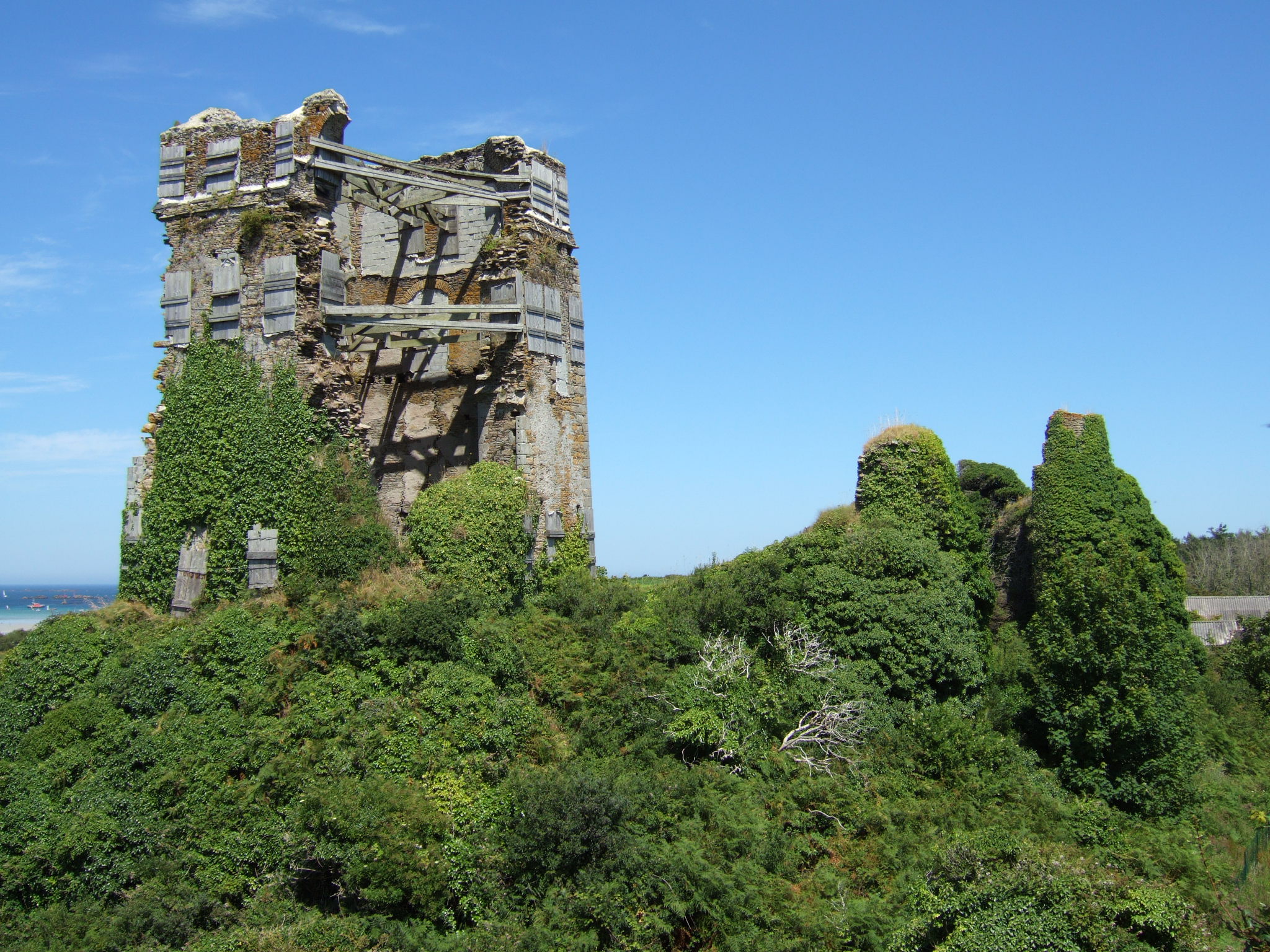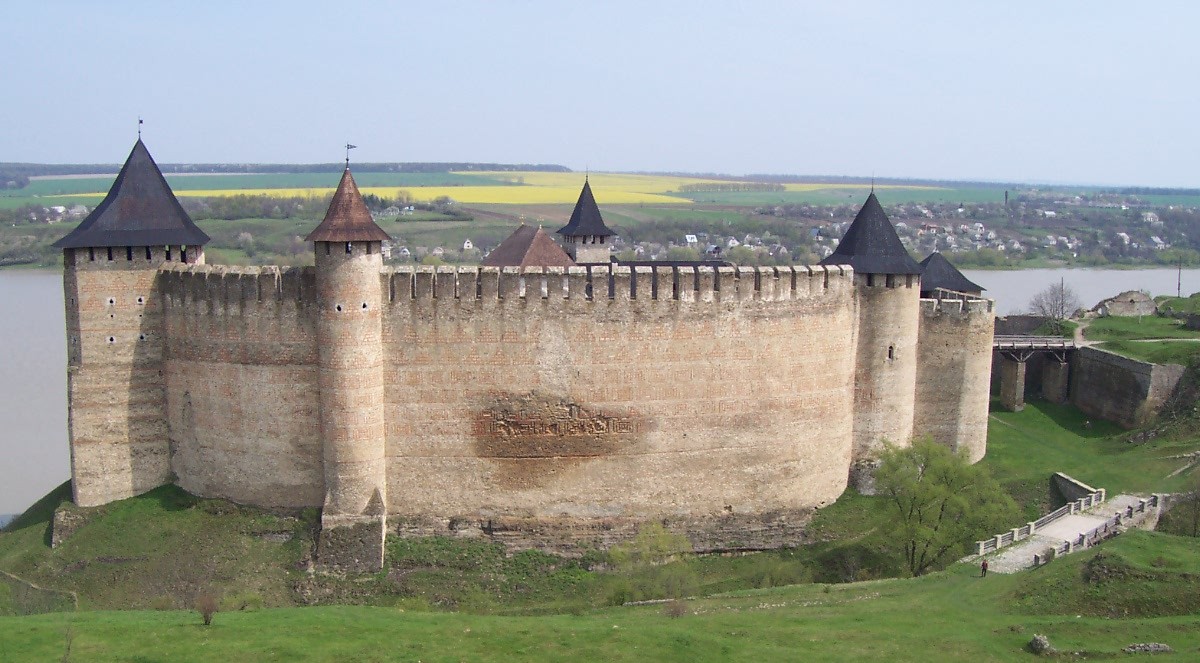|
Château De Trémazan
The Château de Trémazan is a ruined castle in the '' commune'' of Landunvez in the Finistère ''département'' of France. It is located below the coastal road, hidden from the sea. Architecture This medieval building, constructed on a rocky outcrop, has a square keep. A partial collapse during the winter of 1995 exposed the interior, revealing a habitable tower of four floors, each with one chamber. History The history of Trémazan is intimately linked to that of the du Chastel (or Châtel) family, who built it and made it their principal residence for several centuries. The origins of this dynasty are uncertain, but they became very prominent, taking their place in the high Breton aristocracy and counted among the four most important families of the Viscounty of Léon. An old saying characterises Léon in these terms: "''antiquité de Penhoët, vaillance du Chastel, richesse de Kermavan et chevalerie de Kergounadeac'h''" ("the antiquity of Penhoët, the bravery of Chastel, the ... [...More Info...] [...Related Items...] OR: [Wikipedia] [Google] [Baidu] |
Enceinte
Enceinte (from Latin incinctus: girdled, surrounded) is a French term that refers to the "main defensive enclosure of a fortification". For a castle, this is the main defensive line of wall towers and curtain walls enclosing the position. For a settlement, it would refer to the main town wall with its associated gatehouses, towers, and walls. According to the 1911 ''Encyclopædia Britannica'', the term was strictly applied to the continuous line of bastions and curtain walls forming "the body of the place", this last expression being often used as synonymous with ''enceinte''. However, the outworks or defensive wall close to the enceinte were not considered as forming part of it. In early 20th-century fortification, the enceinte was usually simply the ''innermost'' continuous line of fortifications. In architecture, generally, an enceinte is the close or precinct of a cathedral, abbey, castle, etc. This definition of the term differs from the more common use of enceinte ... [...More Info...] [...Related Items...] OR: [Wikipedia] [Google] [Baidu] |
Tour Tanguy
The Tour Tanguy, Bastille de Quilbignon or Tour de la Motte Tanguy is a medieval tower on a rocky motte beside the Penfeld river in Brest, France. Probably built during the Breton War of Succession, it faces the château de Brest and is now accessed by a road off the square Pierre Péron, at one end of the pont de Recouvrance. It now houses the Museum of Old Brest, a museum with a collection of dioramas that depict the city of Brest on the eve of World War II. History Probably built to protect or block crossings between the two banks of the river, the tower's origins cannot be precisely determined. It may have been built by the English during their occupation of the city in the 14th century, or earlier by lord Tanguy du Chastel, of the line of lords of Quilbignon which distinguished itself in battles against the English in Brittany and contributed to the development of the right bank. The name ''bastille de Quilbignon'' gives places to that of ''tour Tanguy'', a forename ... [...More Info...] [...Related Items...] OR: [Wikipedia] [Google] [Baidu] |
List Of Castles In France
This is a list of castles in France, arranged by Region and Department. ;Notes: # The French word ''château'' has a wider meaning than the English ''castle'': it includes architectural entities that are properly called palaces, mansions or vineyards in English. This list focuses primarily on architectural entities that may be properly termed ''castle'' or ''fortress'' (french: château-fort), and excludes entities not built around a substantial older castle that is still evident. # Occasionally, where there is not a specific article on a castle, links are given to another article that includes details, typically an article on a town. # ''Italics'' indicate links to articles in the French Wikipedia. # If no article appears in either English or French Wikipedias, a link is given to an external website. # The number in parentheses after the name of each department indicates the department number used for administrative purposes. # The number of castles in France is estimated to abou ... [...More Info...] [...Related Items...] OR: [Wikipedia] [Google] [Baidu] |
French Ministry Of Culture
The Ministry of Culture (french: Ministère de la Culture) is the ministry of the Government of France in charge of national museums and the . Its goal is to maintain the French identity through the promotion and protection of the arts (visual, plastic, theatrical, musical, dance, architectural, literary, televisual and cinematographic) on national soil and abroad. Its budget is mainly dedicated to the management of the (six national sites and hundred decentralised storage facilities) and the regional (culture centres). Its main office is in the in the 1st arrondissement of Paris on the . It is headed by the Minister of Culture, a cabinet member. The current officeholder has been since 20 May 2022. History Deriving from the Italian and Burgundian courts of the Renaissance, the notion that the state had a key role to play in the sponsoring of artistic production and that the arts were linked to national prestige was found in France from at least the 16th century on. Dur ... [...More Info...] [...Related Items...] OR: [Wikipedia] [Google] [Baidu] |
Monument Historique
''Monument historique'' () is a designation given to some national heritage sites in France. It may also refer to the state procedure in France by which National Heritage protection is extended to a building, a specific part of a building, a collection of buildings, a garden, a bridge, or other structure, because of their importance to France's architectural and historical cultural heritage. Both public and privately owned structures may be listed in this way, as well as movable objects. As of 2012 there were 44,236 monuments listed. The term "classification" is reserved for designation performed by the French Ministry of Culture (France), Ministry of Culture for a monument of national-level significance. Monuments of lesser significance may be "inscribed" by various regional entities. Buildings may be given the classification (or inscription) for either their exteriors or interiors. A monument's designation could be for a building's décor, its furniture, a single room, or eve ... [...More Info...] [...Related Items...] OR: [Wikipedia] [Google] [Baidu] |
Dendrochronology
Dendrochronology (or tree-ring dating) is the scientific method of dating tree rings (also called growth rings) to the exact year they were formed. As well as dating them, this can give data for dendroclimatology, the study of climate and atmospheric conditions during different periods in history from wood. Dendrochronology derives from Ancient Greek (), meaning "tree", (), meaning "time", and (), "the study of". Dendrochronology is useful for determining the precise age of samples, especially those that are too recent for radiocarbon dating, which always produces a range rather than an exact date. However, for a precise date of the death of the tree a full sample to the edge is needed, which most trimmed timber will not provide. It also gives data on the timing of events and rates of change in the environment (most prominently climate) and also in wood found in archaeology or works of art and architecture, such as old panel paintings. It is also used as a check in radio ... [...More Info...] [...Related Items...] OR: [Wikipedia] [Google] [Baidu] |
French Revolution
The French Revolution ( ) was a period of radical political and societal change in France that began with the Estates General of 1789 and ended with the formation of the French Consulate in November 1799. Many of its ideas are considered fundamental principles of liberal democracy, while phrases like '' liberté, égalité, fraternité'' reappeared in other revolts, such as the 1917 Russian Revolution, and inspired campaigns for the abolition of slavery and universal suffrage. The values and institutions it created dominate French politics to this day. Its causes are generally agreed to be a combination of social, political and economic factors, which the ''Ancien Régime'' proved unable to manage. In May 1789, widespread social distress led to the convocation of the Estates General, which was converted into a National Assembly in June. Continuing unrest culminated in the Storming of the Bastille on 14 July, which led to a series of radical measures by the Assemb ... [...More Info...] [...Related Items...] OR: [Wikipedia] [Google] [Baidu] |
Castle
A castle is a type of fortified structure built during the Middle Ages predominantly by the nobility or royalty and by military orders. Scholars debate the scope of the word ''castle'', but usually consider it to be the private fortified residence of a lord or noble. This is distinct from a palace, which is not fortified; from a fortress, which was not always a residence for royalty or nobility; from a ''pleasance'' which was a walled-in residence for nobility, but not adequately fortified; and from a fortified settlement, which was a public defence – though there are many similarities among these types of construction. Use of the term has varied over time and has also been applied to structures such as hill forts and 19th-20th century homes built to resemble castles. Over the approximately 900 years when genuine castles were built, they took on a great many forms with many different features, although some, such as curtain walls, arrowslits, and portcullises, wer ... [...More Info...] [...Related Items...] OR: [Wikipedia] [Google] [Baidu] |
Duke Of Brittany
This is a list of rulers of the Duchy of Brittany. In different epochs the sovereigns of Brittany were kings, princes, and dukes. The Breton ruler was sometimes elected, sometimes attained the position by conquest or intrigue, or by hereditary right. Hereditary dukes were sometimes a female ruler, carrying the title duchesse of Brittany. Its principal cities and regions were ruled by counts who often found themselves in conflict with the Breton ruler, or who became the Breton ruler. During the declining years of the Roman Empire, the earliest Breton rulers in Gaul were styled "kings" of the small realms of Cornouaille and Domnonia. Some such kings may have had a form of hegemony over all of the Brythonic populations in the Armorican peninsula, and Riothamus is called King of the Britons by the chronicler Jordanes. However, there are no certain rulers of the whole of Brittany, which was divided into the fiefdoms of local counts. The Duchy of Brittany had its origins in the ... [...More Info...] [...Related Items...] OR: [Wikipedia] [Google] [Baidu] |


.jpg)


